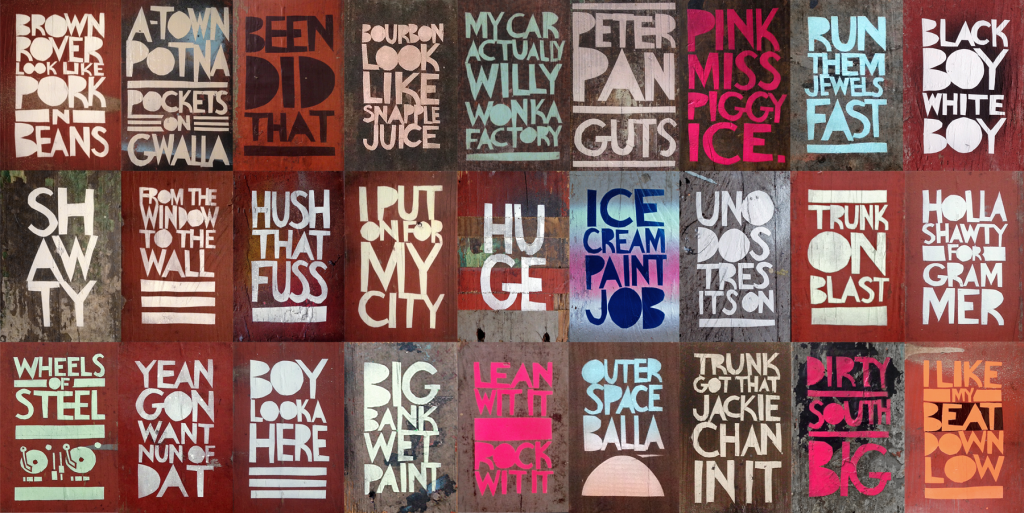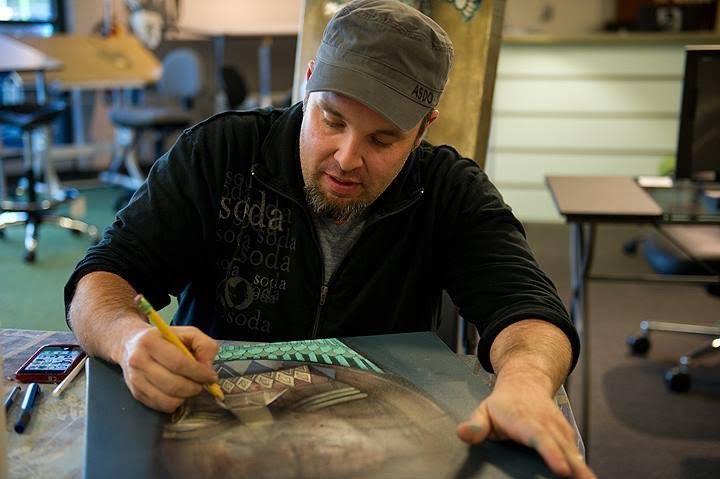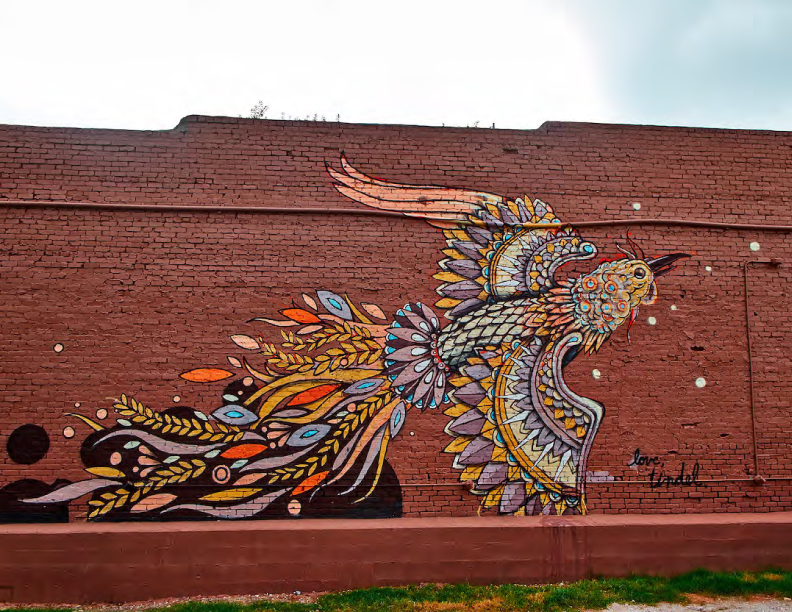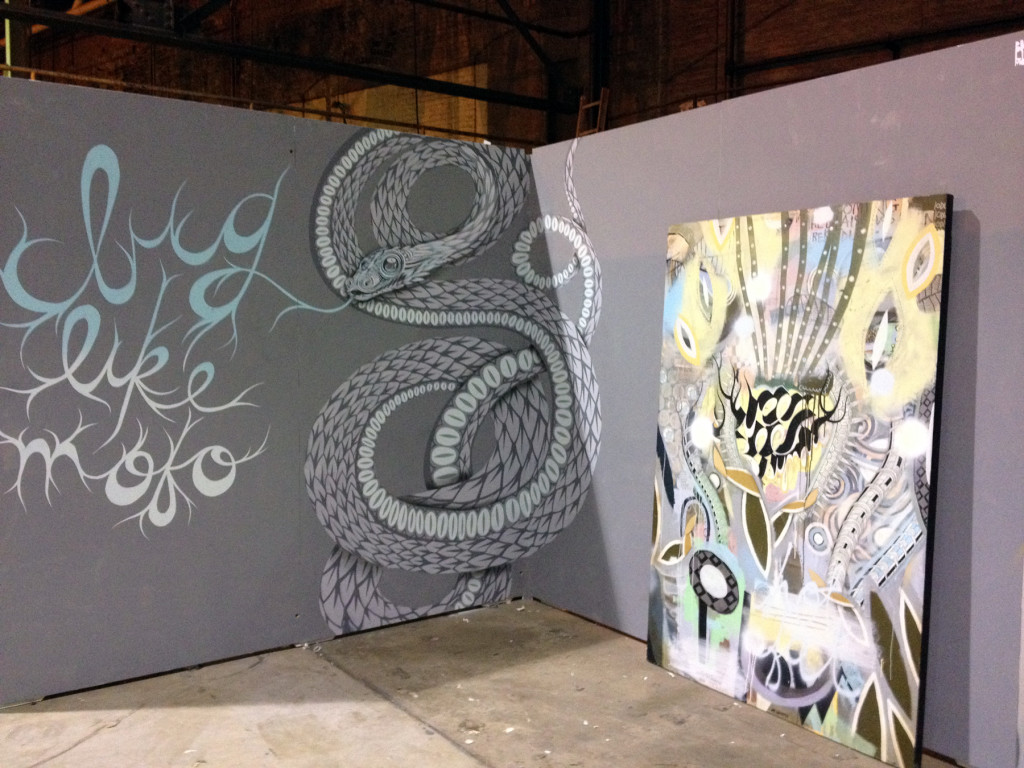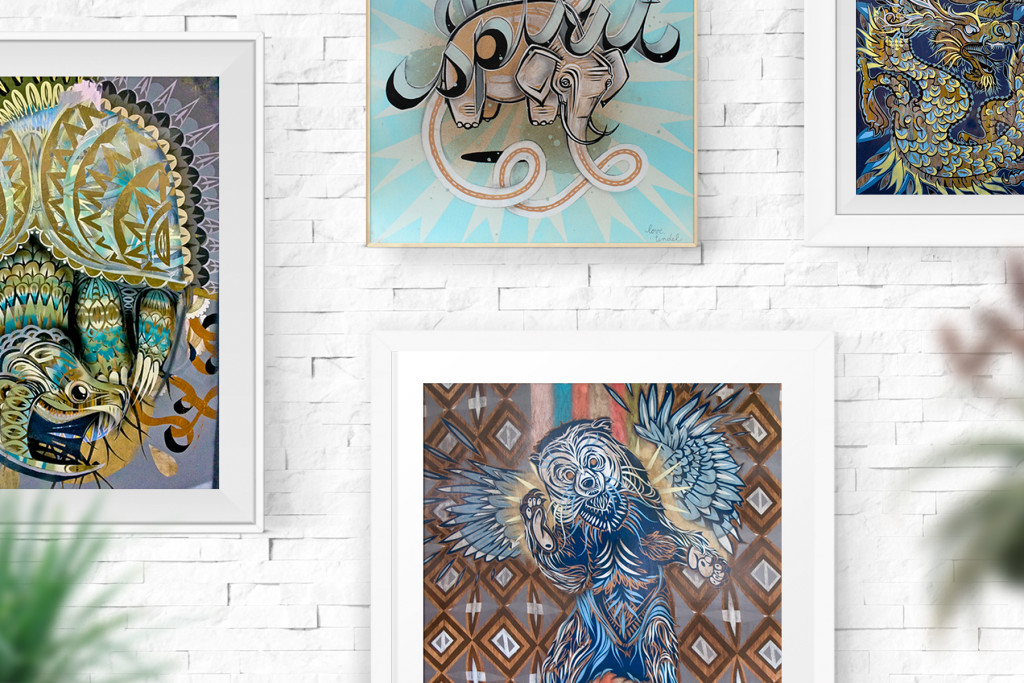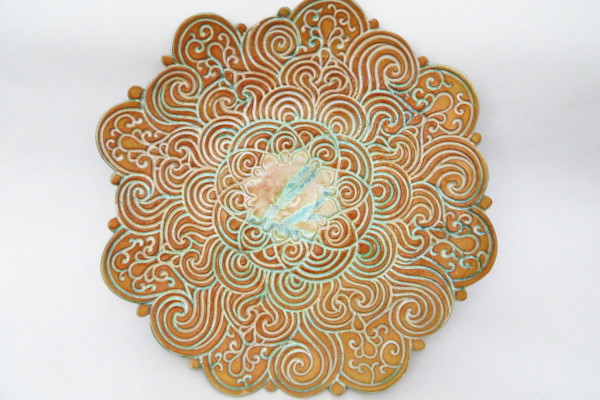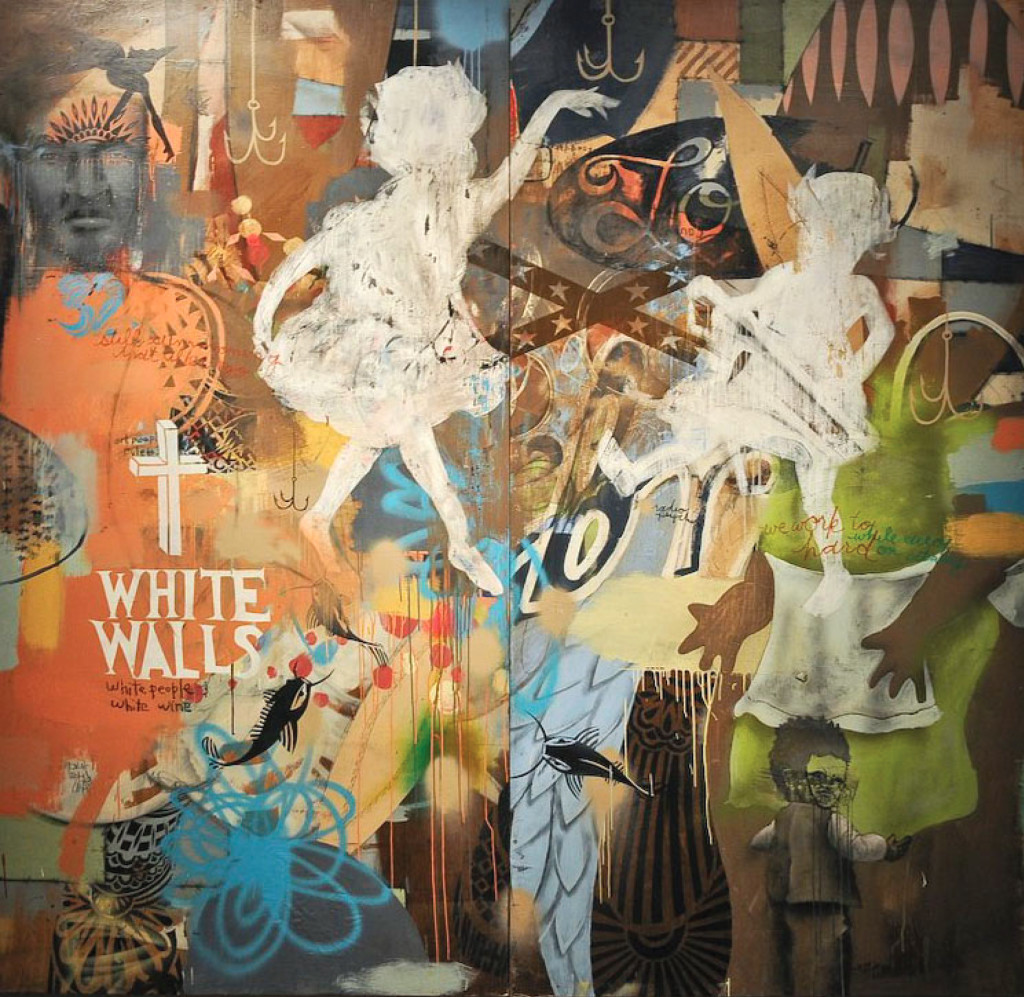 John Tindel has been making art in Atlanta for more than a decade now. Whether you’ve seen one of his exhibitions, visited his studio spot at the Goat Farm or successfully chased after one of his #FAFATL pieces, Tindel is a veteran around these parts. His wood blocks often display quotes from his grandparents or metaphors about Southern rap, all spray-painted in vivid colors.
John Tindel has been making art in Atlanta for more than a decade now. Whether you’ve seen one of his exhibitions, visited his studio spot at the Goat Farm or successfully chased after one of his #FAFATL pieces, Tindel is a veteran around these parts. His wood blocks often display quotes from his grandparents or metaphors about Southern rap, all spray-painted in vivid colors.
A former Living Walls artist, Tindel focuses on the political and social aspects of the South in his work. One of his longest collaborations, with artist Michi Meko, is the project TINDELMICHI, a series of collaborative paintings that call out to their similar Southern roots, growing up in Alabama and moving to Atlanta.
Now, Tindel is working on starting a new company, The Creative Life, to house all of his work and take his ideas to the next level.
Here, Tindel talks to CommonCreativ about the South, painting fast and promoting himself as an artist.
CommonCreativ: Tell me about the South’s influence on your work.
John Tindel: The South didn’t influence my work as much until I was old enough to turn and look back at “The South.” Listening closer to my grandparents old-time wisdom and wit, hearing and understanding dialects that vary as if you were somewhere in Jamaica, and roots that I planted that weren’t even visible, now swell above the ground. I have grown with the South, and the influence feels shared and mutual between myself and my home.
CC: When did you know that art was your thing?
JT: I was always the kid that could draw, but I didn’t really find the talent until the end of college – right before I moved up to Atlanta.
However, art is by no means “my calling.” I realized two years ago that I would rather claw out my eyeballs than have to talk for another second about the narratives behind fine-art imagery. It started to feel very limited for the level of my creative OCD. However, I’m thankful that I had over a decade of straight-killin’-it in the Atlanta art scene, creating some great things with great people that I’m very proud of. I have been shifting my concentration on design for the last two years and it has been a great way to create new pathways in my brain. I returned “art” to something I do Sunday mornings at my Goat Farm Arts Center studio.
CC: What sparked your interest in art?
JT: Oddly, that’s a tough question. I almost think that the creativity I have was passed down from certain branches on my family tree. Almost every memory I have as a human involves creating something or arranging and developing ideas. Creativity was my safety blanket growing up.
CC: You use aerosol paint and tape to create visually interesting patterns and a very specific color palette. How did you come up with your style?
JT: I paint fast. Not like theatrical fast, but efficiently. I’ve been painting pretty obsessively since 1998 and evolution has occurred with every painting. It is almost like a bag of tools — you keep pushing what you define as your style, study yourself and understand the things that you can use. Little by little you start to have a pretty sweet set of defined moves that are purely yours and make up the elements that someone could describe as “your” style.
CC: How would describe your artistic style?
JT: Martha Stewart on acid.
CC: What inspires those clever sayings you often add to your text wood blocks?
JT: With the hand-cut text stuff, I started out using things that my grandparents would say — clever wisdom from a time gone. The recent chunks of wood use short, vivid metaphors from Southern rap. I want to capture these poems and give them there glory outside of the context of a rap song. I really like witty, extra-short metaphors.
CC: Is wood your chosen material?
JT: Yes. When I’m painting a large piece, I like to use wood panel. It’s sturdy and has all the extra things wood offers that canvas cannot. I’m using razor blades to cut elements into the work, so I can press down harder on wood. I still do about 20 percent of work on canvas because it’s lighter to ship than wood.
CC: What materials do you love to work with?
JT: Metal. It just intrigues me to no end. I would love to somehow master it.
CC: Tell me about your ongoing collaboration with Michi Meko.
JT: Man, me and Michi have been feeling good about what we gave to the Atlanta art scene. Two Fat Southern Boys Who Paint has been a decade-plus collab that will continue at some point. As we always do, we go on our own creative adventures in order to bring something back to the collaboration. We’ll see. You will know.
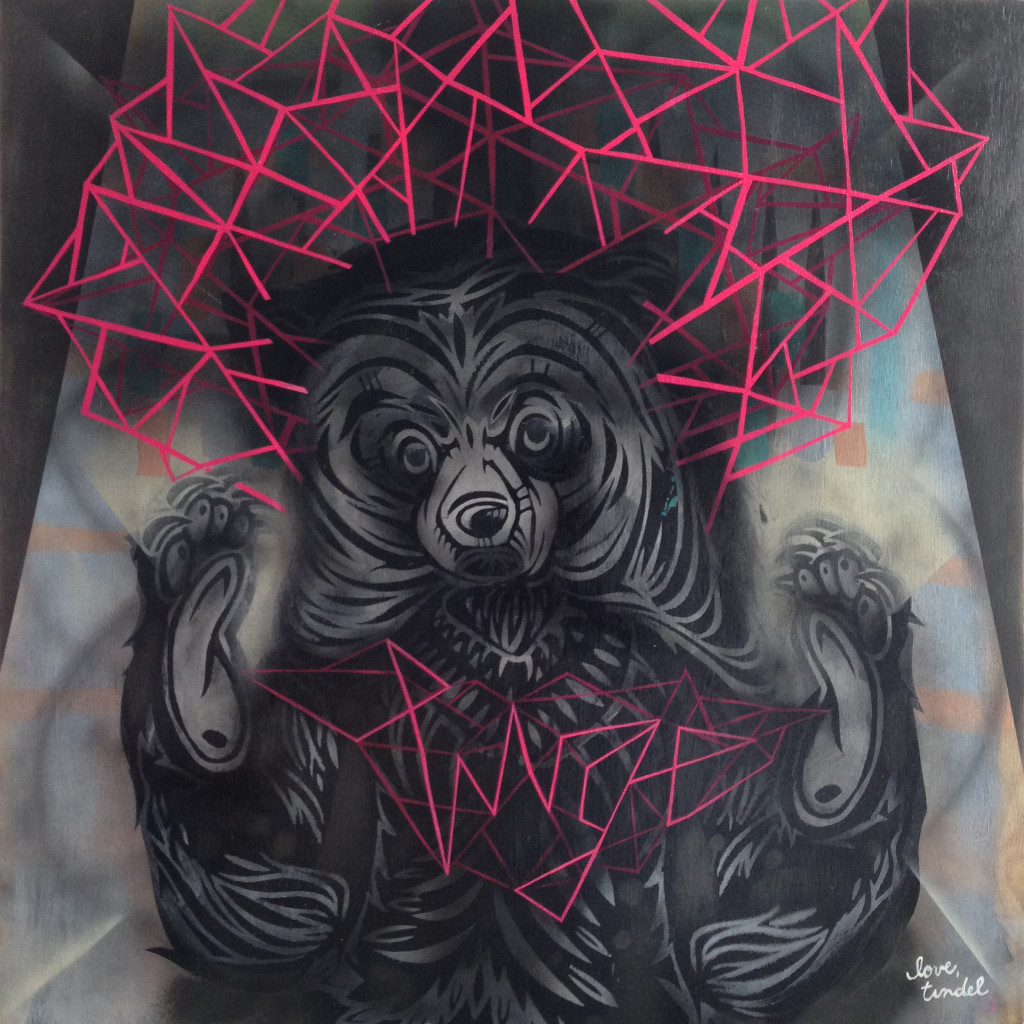 CC: What’s your favorite project you’ve collaborated on?
CC: What’s your favorite project you’ve collaborated on?
JT: So many things. Probably my favorite project would be the one I am most proud of. We were able to have a full exhibit “RELICS” inside the Marietta-Cobb Museum of Art and we worked our asses off and created what I feel was our best exhibit. But, our first show “Redneck Graffiti” was legendary… I feel like it kicked off a Southern art revival.
CC: You’re involved in #FAFATL. What’s your favorite part of participating?
JT: I was first intrigued that there was a hashtag way to send people on a rush to go find art gifted throughout the city. Atlanta has a great history of artist leaving work for folks to find, but this was on hyperdrive. Evereman started this following of people eager to find his work, but back in the day, you just found it — no hashtags. It has evolved into something unique and honestly a great way to start the spark inside people to start collecting art. I really like making and giving the art away. I use to stress over making money off of every painting that I painted. It feels good to just be able to give them to the city.
CC: Do you have any dream collaborations with other local artists?
JT: I’m lucky to be part of The Creatives Project (TCP) artist residency with other talented Atlanta artists including, Joseph Dreher, Meta Gary, Meredith Kooi, William Massey, Shanequa Gay, Margaret Hiden, Scott Silvey and Rachel Garceau. I’m hoping that I get to collaborate with all of them and learn from there take on different approaches and mediums.
CC: How do you promote yourself?
JT: Promotion is a long game. I think you need all the basics – website, business cards, etc. But there’s an element of magic to effective promotion. With art, you need to paint live. This city is small, and painting at events and around town will help you get noticed. Get into group shows. Some smaller galleries here will give you a shot if you get noticed at the show. See if you can score a mural wall around town. Talk to your favorite gallery. Leave found art. My version of success is when you can sell your own creations to collectors of all kinds through your own means.
CC: What do you think about Atlanta’s current creative scene?
JT: The creative scene is strong and getting stronger. Fahamu Pecou is finally being noticed by the art elite, and Michi is on the rise in that world as well. There are major design agencies entering the city and that’s adding to the diverse creative fields that thrive. There is the Goat Farm and other great studio spots popping up. Fashion and Hollywood are traveling down these Southern streets as well. The scene is ripe and will get even better. My theory on the art scene is that you need to have less hugging and more people buying art.
You can view more of John Tindel’s work on his portfolio site and his Instagram.

